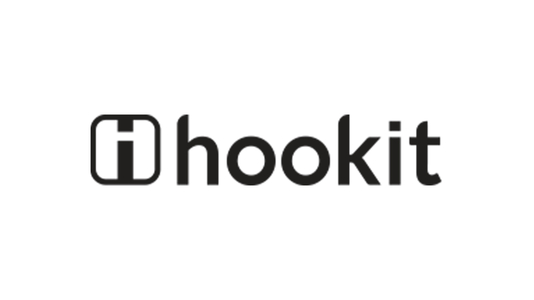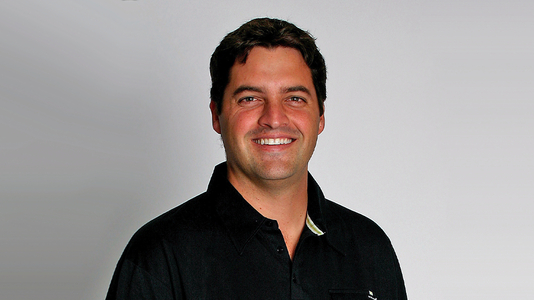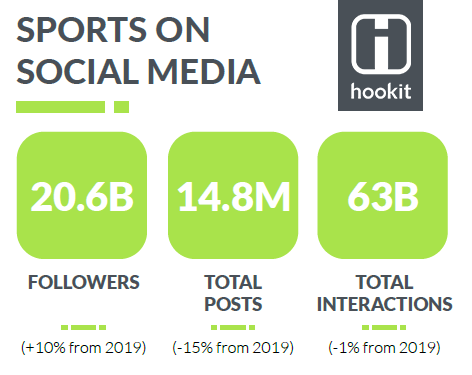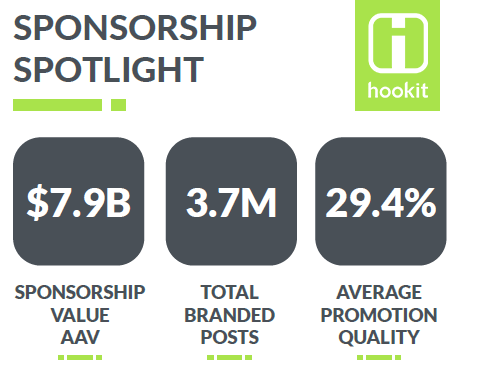

SCOTT TILTON
CEO
Hookit
CMO Council: To what degree has the cancellation or postponement of mega-sports events diminished the appetite of brand sponsors, or re-directed spending into other areas?
Hookit: From our analysis, the months of March through June is when COVID had its biggest impact. Sponsorship value created for brands by sports properties across all sports dropped by about $150M a month on average for those four months. This dip compared to the rest of 2020 caused a $600M “loss” in value. However, when you look at the year as a whole, the total sponsorship value generated for brands in 2020 was nearly $8B, which is only an 8% hit to the total. We also found that the total number of sponsor branded posts was down in 2020, but the engagement on those posts was up which helped make up some of the lost value. Brands absolutely doubled down their efforts and transitioned much of their activation efforts to social and digital.
After March, in-person physical activations couldn’t happen or were severely limited in scope due to the coronavirus restrictions. To make up for this loss of in-person activations, there was a significant pivot to digital activations by brands and their partners within sports. These temporary “make-goods” weren’t the original plan, but brands were showcased in new ways and to new audiences that they had never been before. Some properties were able to create new revenue streams by leveraging their social channels. While in-person activations will be back when the fans return en masse to the stadium, these digital activations will become standard in sponsorship contracts going forward.
The best CMOs & sports marketing executives have realized that social media is now central to maximizing the value of sponsorship marketing spend, which has gone largely unmeasured.
Top marketing executives have increasingly applied data and analytics across all their marketing channels to drive better results. Sponsorship is one of the last marketing categories to see that happen. Now, with the shift to digital activations, that data is more accessible than ever for brands through companies like Hookit. CMOs and sports marketers have realized that they must leverage social media and data to evolve their sponsorships. COVID has accelerated both the shift to social and digital as well as the importance of data to evaluate the effectiveness of sponsorships.
 CMO Council: What strategies and creative approaches have brands used to retain and maximize their sports marketing investments during these restrictive times? What is the outlook for 2021?
CMO Council: What strategies and creative approaches have brands used to retain and maximize their sports marketing investments during these restrictive times? What is the outlook for 2021?
Hookit: Fans weren’t in stadiums in 2020, but they were still following their favorite athletes, teams, leagues, and sponsors on social media. There were a variety of approaches taken by brands last year when working with their sports partners. Some brands simply stepped back from promotion, feeling it wasn’t the right timing to be pushing products. Others leaned in to support their partners, having the athletes or teams post how a specific brand had helped them through the pandemic or allowed them to continue training during lockdown. There were brands that took a more lighthearted approach, starting or participating in social media #challenges.
Looking forward into 2021, the outlook is good. By July 2020, sponsorship value had bounced back to pre-COVID levels, signaling that sports marketing is as strong as ever. Brands and properties are working together differently now, but the goals are still the same. The more savvy brands are investing in sponsorship measurement tools to allow them to evaluate their portfolio and identify areas for opportunity or where their partners aren’t performing as well for the brand.
CMO Council: What new digital media insights and analytics are helping brands select, direct, evaluate and justify sports marketing or athlete personality investments?
Hookit: With more activations happening on social media in 2020 than ever, there is more data available to sports marketers to be able to make informed decisions on which partnerships are performing best for their brand goals.
Sponsorship technology (spontech) companies like Hookit empower marketers to impact the bottom line by measuring sponsorship spend and partnerships against an optimized set of KPIs. Some of these KPIs that we see brands leveraging are Adjusted Ad Value (social media sponsorship value), Promotion Quality (how well the brand is promoted), and audience metrics like regional breakdowns, interests, and more. Sports marketers can now get live dashboards with these metrics and recommendations that can be leveraged across their organization to positively impact sponsorship strategy and results.
CMO Council: How have brands evolved their use of social media campaigns and channels to amplify their sports and athlete sponsorships and fan engagement? And how does this vary worldwide?
Hookit: Social media isn’t just an afterthought anymore when it comes to sponsorship deals. The trend we are seeing is brands building in specific fan engagement goals and metrics to the contracts instead of a certain number of posts, which used to be the standard. For example, instead of asking for 3 posts throughout the season, brands are requiring partners to drive 1M fan engagements or 20M video views on specific branded content, which can be tied to a certain level of sponsorship value. These are metrics that brands already understand and add to their media mix models to evaluate the impact overall on the brand.
Brands are also getting smarter about when, where, and how to activate on social media through their sport partners. Now, brands can know which platform is most engaged for that partner and ask to have their posts on that platform. Or, brands can dictate how their brand is positioned within the content to maximize Promotion Quality but also understand how that can impact engagement based on previous campaigns. Often, we see that clear advertisements with near perfect Promotion Quality don’t get as much fan engagement as more authentic brand placement.
CMO Council: Which brands are doing the best job of interacting with fans and extending the reach, value and effectiveness of sports sponsorships?
Hookit: The top brands are all listed in the full report and broken down by industry, but when it comes to biggest movers among the top 100, there are a few that stand out. Gambling brands as a whole have seen a significant uptick in sponsorship value in 2020. For example, Kindred Group’s Unibet had over double the number of sports properties promoting their brand, saw a significant increase in average Promotion Quality, and received nearly 3x the sponsorship value in total. Other brands with double-digit % growth in sponsorship value include Kia, Gatorade, Chevrolet, AT&T, Pirelli, and even Reebok. These brands are invested in various sports, for example, Pirelli saw the majority of its value from motorsports where Reebok saw significant value from Fighting Sports and their UFC partnership.
 CMO Council: What can brands learn from your 2020 Report on the State of Sports Sponsorship?
CMO Council: What can brands learn from your 2020 Report on the State of Sports Sponsorship?
Hookit: The #1 key takeaway for brands is that digital activations are here to stay. Brands and sports properties had to pivot and innovate in 2020. From that, they were able to create engaging initiatives that drove brand value. These types of activations will only continue to increase, even when fans come back to the stadiums. In fact, the two will likely become even more integrated.
The second biggest learning for sports marketers is that frequency & quality of promotion are key. It may sound simple or obvious, but in order to maximize sponsorship value, make sure your partners are promoting your brand consistently and deliberately with their best content. In 2020, leagues and teams averaged 12 and 11 branded posts per week, respectively. With dozens of brands being promoted, frequency of promotion is key to your brand breaking through the noise. On the other hand, athletes averaged less than 1 branded post per week, but were far more deliberate in how they promoted their brand partners. However, unless you are the exclusive sponsor of that athlete, your brand is likely not being promoted often enough at that rate. In fact, the average brand received 3 branded posts per sports property promoting that brand. That’s 1 post every 4 months per partner.
In addition to frequency of promotion, Promotion Quality is key to maximizing the value that your brand receives from every branded post. If you’re getting a limited number of posts, your brand needs to be well represented in each post. High Promotion Quality is what drove the Women’s Super League to the top of the list of value generated among our Leagues On the Rise. The average Promotion Quality for brands in 2020 was roughly 27%. Only 2 of the top 30 brands by AAV had an average Promotion Quality lower than that. Santander led the top 10 with a Promotion Quality of 41%. If Santander had only received the average Promotion Quality of 27%, the brand would have seen $69M less in sponsorship value. Relatively small changes in Promotion Quality can lead to large changes in sponsorship value.
